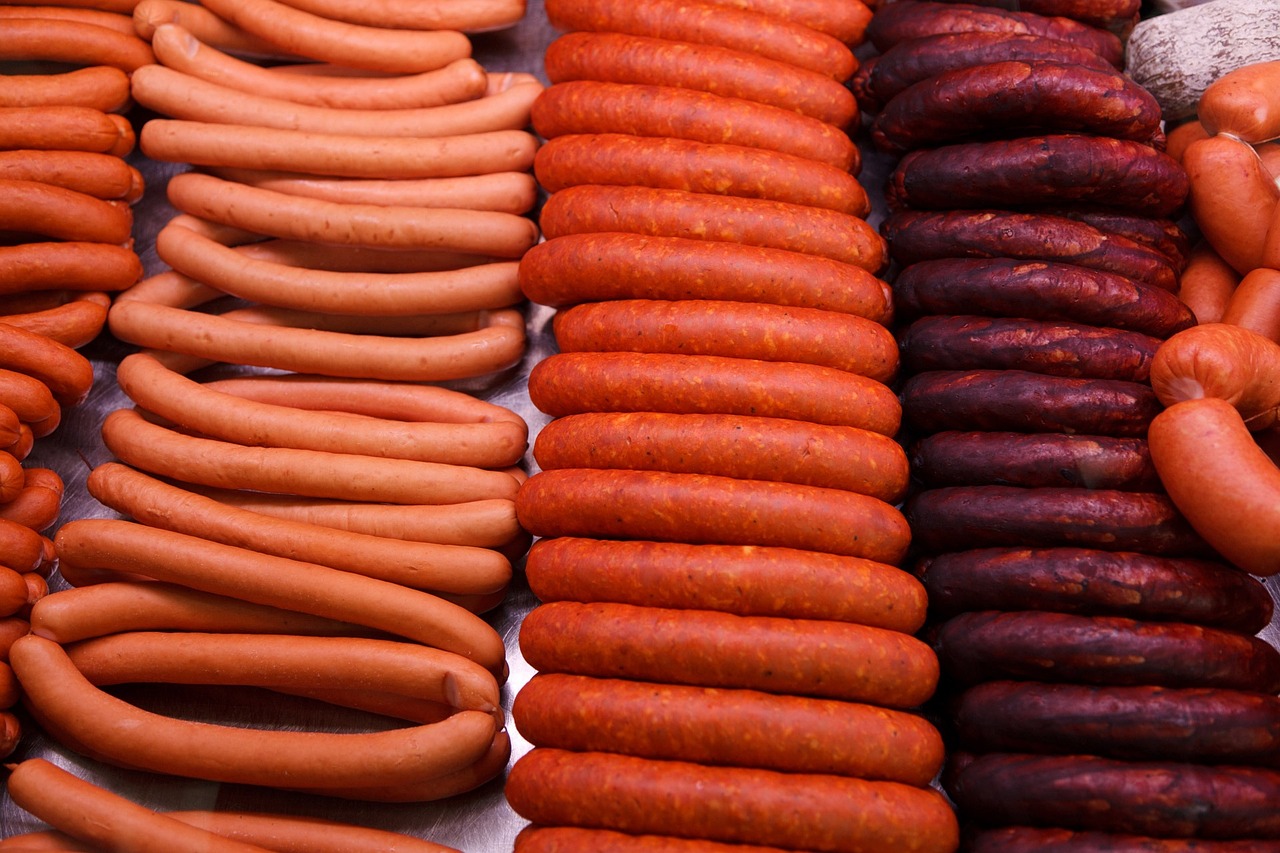Sausage-making has been a traditional culinary art practiced across various cultures for centuries. This delicious and versatile food item is appreciated by people of all ages. To make a perfect sausage, understanding the process, the ingredients, and equipment plays a crucial role. Throughout this article, we’ll explore the art of sausage-making and discover the tips and techniques used by experts.
To begin with, one must know that the process of creating sausages entails the meticulous combination of ground meats, seasonings, and other ingredients. It entails using the right blend of flavors to yield a product that is delicious and perfectly textured. Moreover, having the appropriate equipment on hand ensures a smooth and successful experience when making your sausages at home.
Key Takeaways
- Understanding the sausage-making process is essential for excellent results.
- The perfect blend of ingredients and seasonings ensures a delicious product.
- Utilizing appropriate equipment increases efficiency and success in sausage-making.
Ingredients for Sausage Making
Meat Selection
The primary ingredient in sausage making is meat. To create a flavorful sausage, a variety of meats can be used, including pork, beef, lamb, chicken, and turkey. Each type brings its own unique taste and texture. For a richer, more unctuous sausage, high-fat content meats like pork or lamb are ideal, whereas leaner meats like chicken or turkey create lighter sausages. Some sausage recipes also incorporate variety meats, such as hearts, livers, or tongues. The meat should be fresh and of high quality for the best taste.
Spices and Seasonings
Spices and seasonings bring flavor and complexity to the sausage. The most common seasonings are salt, pepper, garlic, and sage. However, many other spices can be added for a unique taste, such as black pepper, fennel seed, kosher salt, paprika, and spice mixes. The choice of spices and seasonings ultimately depends on personal preference and the desired flavor profile of the sausage. The following list summarizes some popular spices and seasonings used in sausage making:
- Salt: Essential for enhancing the meat’s natural flavors.
- Black pepper: Adds depth and heat.
- Fennel seed: Provides a distinct sweet and licorice-like flavor.
- Paprika: Offers smoky, sweet, or spicy notes.
- Garlic: Gives a pungent, aromatic taste.
- Sage: Imparts a warm, earthy character.
Curing Ingredients
Traditionally, curing ingredients are used to preserve sausages and add a distinct taste. Curing ingredients often include sugar, sodium nitrite, and potassium nitrate. These additives help stabilize the sausage and contribute to its deep red or pink color. Nitrites and nitrates also inhibit the growth of harmful bacteria, keeping the sausage safe for consumption.
Some modern sausage recipes may use other substitutes for preserving, such as rice or potato starch. These can serve as binders and provide a similar shelf life without the use of traditional curing salts. When making sausages at home, it’s essential to follow a trusted recipe for proper proportions of curing ingredients and meat to ensure a safe, delicious product.
Equipment Required
Grinding Equipment
When making sausages, the most crucial equipment is the grinding device. There are various ways to grind meat, and the following tools are recommended:
- Meat grinder: A meat grinder is the most common tool used for effectively grinding meat. It comes in both manual and electric models, with different sizes and capacities. Opt for a stainless-steel grinder for durability and easy cleaning. A bowl is needed to collect the ground meat.
- Food processor: If a meat grinder isn’t available, a food processor makes an acceptable substitute. Cut the meat into smaller chunks before processing to achieve the desired consistency. This method may take additional time compared to a meat grinder.
- Stand mixer: Some stand mixers offer a meat grinding attachment, making it another viable option for grinding meat. It serves as a handy multi-purpose tool in the kitchen.
A scale and a thermometer should also be at hand while preparing sausages. A scale ensures accurate measurement of ingredients, while a thermometer helps in maintaining the optimum temperature for both grinding and curing.
Stuffing Equipment
Once the meat is ground and seasoned, it’s time to stuff the mixture into sausage casings. The following equipment can be used for this purpose:
- Sausage stuffer: A sausage stuffer, also known as a sausage press, makes stuffing the sausage mixture into casings more efficient. It comes with a hopper to hold the mixture and a stuffing tube to push the mixture into the casings. The sausage stuffer offers multiple speed settings for a smooth process.
- Stand mixer attachment: If a stand mixer is already being used for grinding meat, a stuffing attachment can save time and space in the kitchen. The attachment works similarly to a dedicated sausage stuffer, using a hopper and stuffing tube to fill the casings.
In addition to the stuffing equipment, it’s vital to have high-quality casings for the sausages. Natural or synthetic options are available, depending on preference and recipe requirements.
Using the right equipment during the sausage-making process ensures consistent results and a more enjoyable experience. A smoker can also be a valuable addition for those interested in creating a variety of flavorful sausages.
The Sausage Making Process
Preparation of Ingredients
The first step in sausage making is to gather and prepare all necessary ingredients. This includes selecting a meat base, such as pork butt, and ensuring it is coarsely ground for the desired texture. Other ingredients to enhance flavor are also essential, with common additions being garlic powder, wine, and various herbs. Natural casings, usually from pork or sheep gut, can also be soaked in water to make them more pliable.
Mixing of Ingredients
Once the ingredients are prepared, the mixing process begins. This can be done by hand or with an electric mixer, ensuring that the ground meat and flavorings are well combined. Creating a uniformly blended mixture throughout the sausage is essential to allow even distribution of flavor and a consistent texture. For those looking to follow a specific sausage recipe or try homemade sausage, plenty of resources can be found on the internet.
Stuffing the Sausage
Next is stuffing the sausage into casings. A sausage maker can be used to pack the meat mixture into pre-soaked casings. This process may require some care as air bubbles can form within the casings, leading to irregular texture. Methods for avoiding air bubbles include:
- Using a slow and steady pace when stuffing
- Pricking the casings with a pin to release trapped air
- Tying off links between sausages to ensure even portions
Curing and Cooking Techniques
There are various techniques for curing and cooking sausages. Cured sausages, whether dry or semi-dry, require a curing process using specific chemical agents. Depending on the desired outcome, sausages can also undergo smoking or fermenting, which can impart unique flavors and textures.
For cooked sausages, methods such as grilling, roasting, and pan-frying can be employed. Some people may prefer to roast sausages on a sheet pan, while others might enjoy grilling them for a BBQ experience.
Regardless of the chosen method, it is crucial to make sure sausages are fully cooked, with pork sausage often requiring a higher internal temperature than other types of meat. Proper storage techniques, such as freezing or refrigeration, must be maintained to ensure the freshness and safety of the product.
In conclusion, the sausage-making process comprises ingredient preparation, mixing, stuffing, and various curing or cooking techniques. With diligent attention to detail and the right tools, anyone can create a delicious and satisfying homemade sausage recipe.

